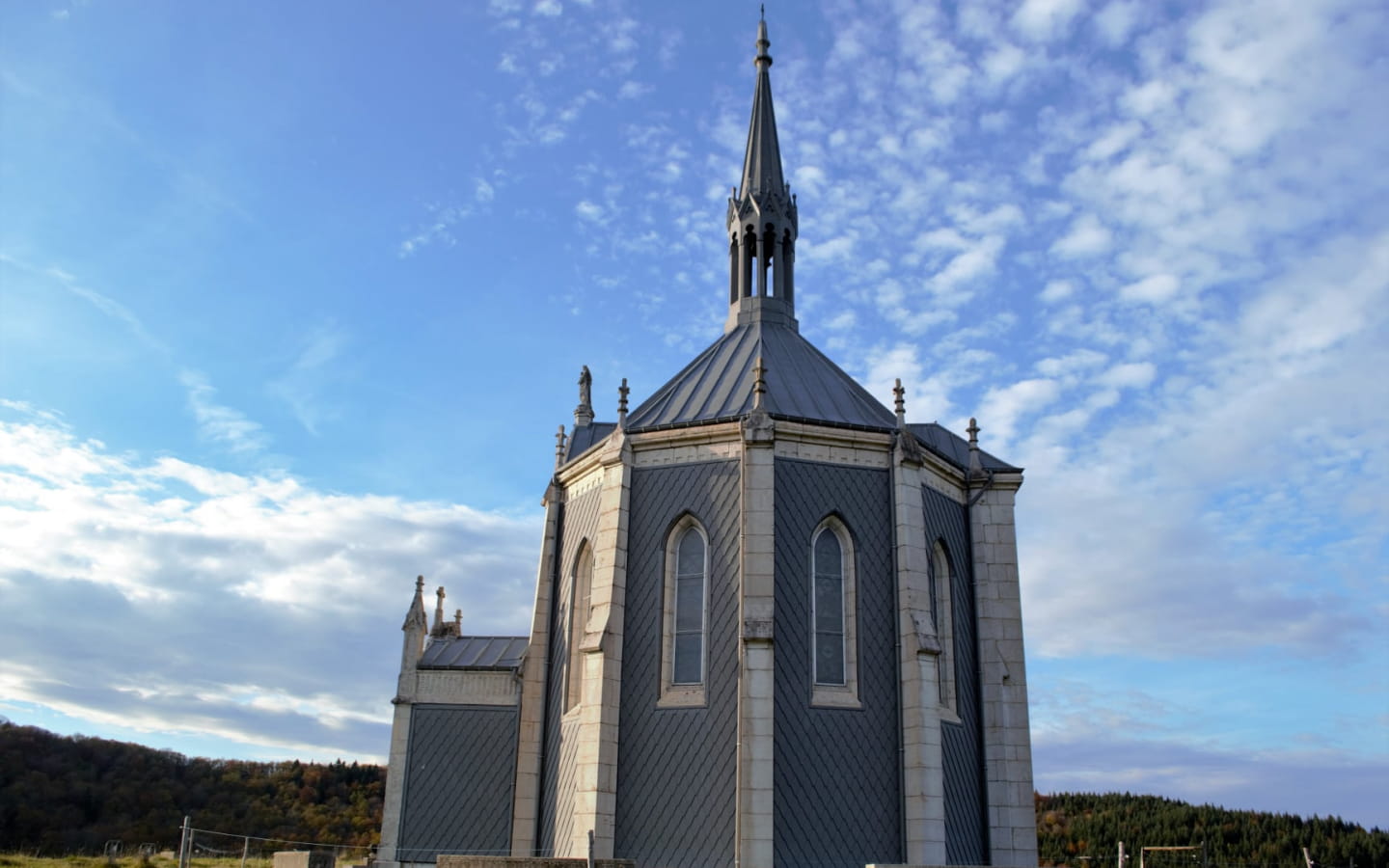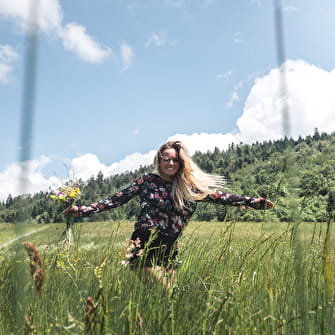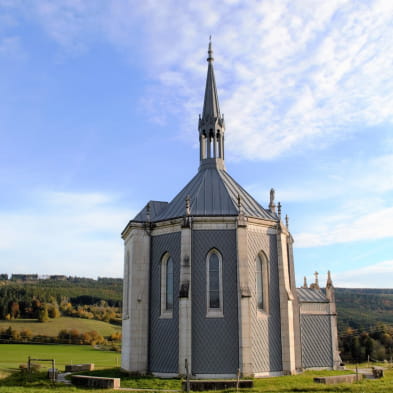
Chapelle Notre-Dame des Anges
Jaunotte makes you discover the Notre-Dame des Anges chapel in Ouhans (1875). Meeting with our friends the Montbéliardes...
The Notre-Dame des Anges chapel in Ouhans is built on the top of the hill overlooking the source of the Loue river. It is made of limestone rubble covered with sheet metal cladding, with a polygonal metal roof crowned by a thin bell tower. It forms a ten-sided polygon. Indeed, it needed a place for the nine choirs of angels and one for the Virgin. The entrance is not on the west side as it is often the case, but the builder has rotated it slightly and, as a result, the entrance is facing the village.
Inside, the white walls host statues of angels all around the chapel. The choir is only a slight recess in the wall where a statue of the Virgin rests on a console. A small altar on a columnar base is leaning against the wall below the Virgin.
The chapel was built between 1864 and 1875. A subscription was launched in 1862 by the village priest, Father Paget, who had been the parish priest of Ouhans since 1847. He was originally from Sombacour, and was assisted by other local clergy (Abbés Tyrode, Belot and Vorbe, quoted in a text of 1862). Another character played an essential role in this history: it is the reverend father C.S SALOMON (1804-1864). It would seem that this priest from Ouhans and uncle of the mayor of the time was the real initiator of this project... perhaps he was the project manager! Unfortunately, he died before the building was completed.
It is also important to note that all the parishioners of Ouhans and Renédale participated in one way or another in the erection of this chapel. Everything that was within the competence of the villagers was done voluntarily: felling, foundations, extraction and transport of materials. The subscription was opened on September 22 (the day of Saint Maurice, the patron saint of the parish).
The reasons for the construction of the chapel: first of all to thank the Virgin for having avoided misfortunes during the revolution. The construction of this chapel will ensure the protection of the Virgin and it will tighten the bonds between the faithful of the parish.
The "local legend" alludes to a sacrilege (Abbot Paget vaguely alludes to it in a letter to the archbishop). The oral tradition tells that the young people, probably the conscripts, in particular the one called "the big Bichet", would have sawn the cross which rose on the platelet. Why would they have done this? Were they angry with the priest? In any case, the latter, in retaliation, imposed humiliating penances on everyone. And wouldn't the most beautiful reparation for this crime be the construction of this chapel? The legend does not tell us if the "big Bichet" used his strength to build the materials...
In May 1864, the commune decided to cut a fir tree to build a shelter for the stonecutters at the place called Le Platelet, the site of the chapel.
In 1866 work began, but in 1872 the work had hardly progressed: the commune granted a subsidy of 2,000 francs, then another 1,000 francs in 1874 to finish the work on the chapel that had begun 8 years earlier.
In 1875, Abbot Paget asked the archbishopric for permission to bless the Virgin of the chapel, which was soon to be finished.
Sources: gallica -BNF and Frédéric DELGRANDI for AVPEC VUILLECIN.
Additional documents inside the chapel








